


Saint-Chamond 194mm SPG Aberdeen
English Translation
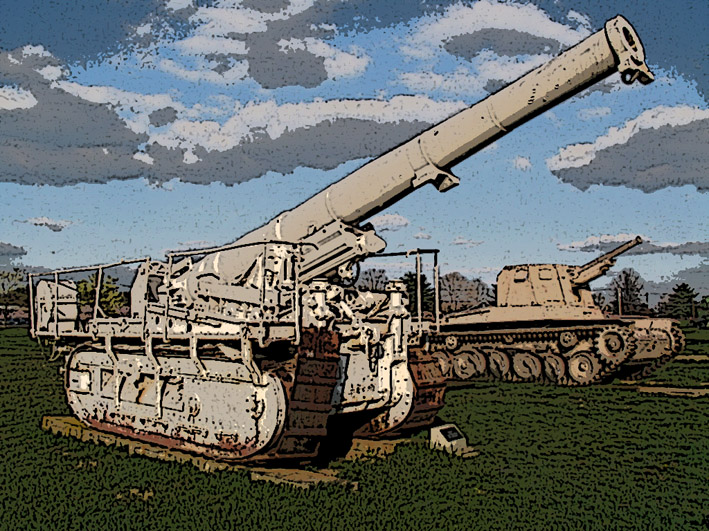 |
St Chamond GPF 194 mm
Le Canon Automouvant est né au durant la 1ère guerre mondiale, de la nécessité de disposer d’une artillerie qui puisse suivre les attaques d'infanterie pour les appuyer et ensuite se regrouper pour effectuer un bombardement massif sur un point précis du champ de bataille
Les anglais suivent le même chemin avec le Gun Carrier MK 1, qui un engin dérivé du char Mark I. Les chenilles ne sont pas imposantes. La coque est une coque plate avec à l'arrière une superstructure rectangulaire couvrant le moteur avec la transmission du char Mark I (positionné à l’inverse par rapport au char). Son équipage se compose d’un chef de pièce d’un mécanicien et deux pourvoyeurs . Une queue de franchissement similaire à celle du char Mark I aidant aux divers mouvements du char se trouve à l'arrière du véhicule.
Pour le transport du canon les roues ont dû être retirés de l’affut et positionnées de chaque coté du châssis Aussi en théorie, des canons de campagne pouvaient être adaptés sur ce châssis mais en réalité, seul un obusier a été utilisé Les pièces pouvaient aussi être déchargées grâce à un socle pivotant assisté de deux treuils mus par un moteur. A l’avant de la superstructure se trouvait une cabine abritant le conducteur sur la gauche et un membre d’équipage chargé des freins sur la droite. 48 seront construits
Seule la France a construit un vrai automoteur d’artillerie ( GPS ) et non pas un Gun Carrier comme en Angleterre
Ils ont conçu et construit deux types de canon automouvant Le Schneider et le St Chamond. Tous deux ont été conçus pour utiliser leur pièce comme on l’entend au XX° siècle avec le AMX 13 F3 ou le M107 ou M 110 américains
Le canon automouvant Schneider de 220mm avait un canon 220mm mle 1917 22 ont été construits avant 1918 et elles ont été employées, pendant les batailles de St Mihiel.
Le St Chamond lui fut fabriqué en deux versions
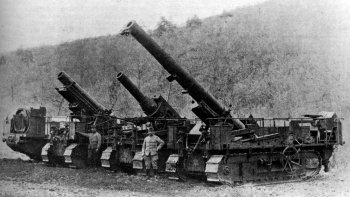 |
280mm Howitzer
194mm GPF .
Le St Chamond était mu par 2 moteurs électriques, un pour chaque train de roulement
( comme sur le char de combat)piste, mais l'électricité pour les moteurs proviennent d'un moteur situé sur une remorque porte munitions - qui est tractée et reliée au canon chaque fois qu'il avait à se déplacer. Avec un poids de 32,6 tonnes, il avait une vitesse de 8 km / h sur route et de 3 km / h en tout terrain .
Au cours du transport le tube rentré et a tiré en arrière, juste pour le rendre plus facile à manier. En position de tir une paire de volets situés au milieu du véhicule été ouverte, ce qui permet le recul du tube vers le bas.
La portée du canon était d'environ 21kms. Il avait une vitesse initiale d'environ 725 m / sec
Il pourrait tirer 2/4 obus de 80kgs par minute, et jusqu'à 100 coups par heure.
Quelque 50 engins ont été produits, mais on ne sait pas exactement combien ont été utilisés au cours de la fin de la 1ère guerre mondiale.
Ils sont restés en service dans les années 20 et 30 et ont été à nouveau utilisée durant la 2e Guerre Mondiale
Ils ont connu le feu à nouveau en 1940.
Après la chute de la France la Wehrmacht utiliser ce Beuten Blindée dans le Front de l'Est,. Les ex GPF français furent utilisés à Sébastopol en 1942 au sein de la batterie 917 avec 3 pièces et devant Leningrad avec la 4°batterie de l'Abteilung II/84 à 3 pièces
Il est à noter un emploi particulier de cet armement fait par les allemands
Ils n'ont pas remis en service ces matériels mais ont employé leurs affûts pour produire un matériel hybride étonnant, le 19,4 cm K485/585(f):
les tubes ont été démontés de leur affut et remontés sur des affûts à châssis circulaire de mortier de côte Mle 1889.
Ils furent utilisé pour armer des batteries de côte au Danemark à Stauning H.K.B. Stauning 17./180
Il était prévu aussi un HKB Bjerghuse18./180 avec 4 pièces
Au 1° mars 1944, il y avait en service 15 matériels de 19,4 cm K.485(f) sur chenilles et 6 19,4 cm K.485/585(f) dont 4 à Stauning.
Les canons étaient montées sur des Ringstand, surement des Bauform 271
La portée du K.485(f) sur chenilles est de 20800 m et que celle du K.485/585(f) est de 22000 m
Certains matériels ont été pris en charge par les Italiens, et utilisés par eux.
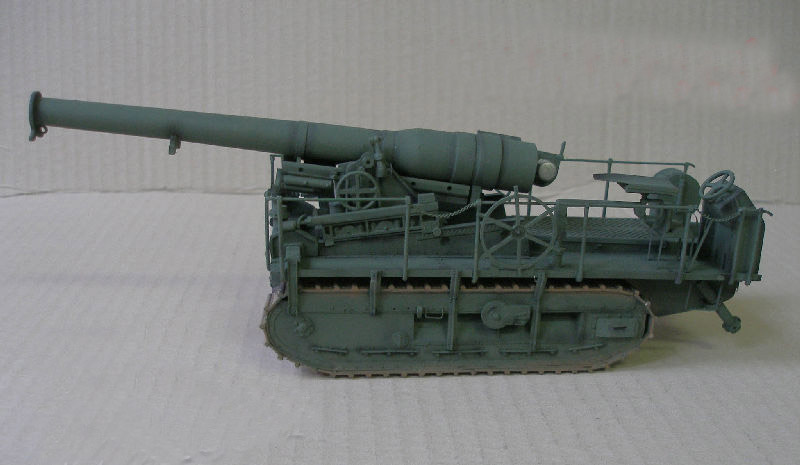 |
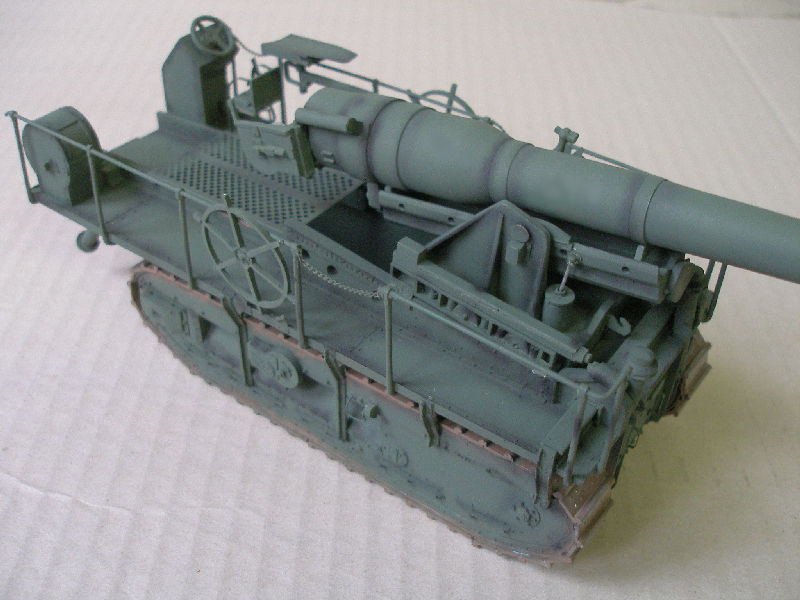 |
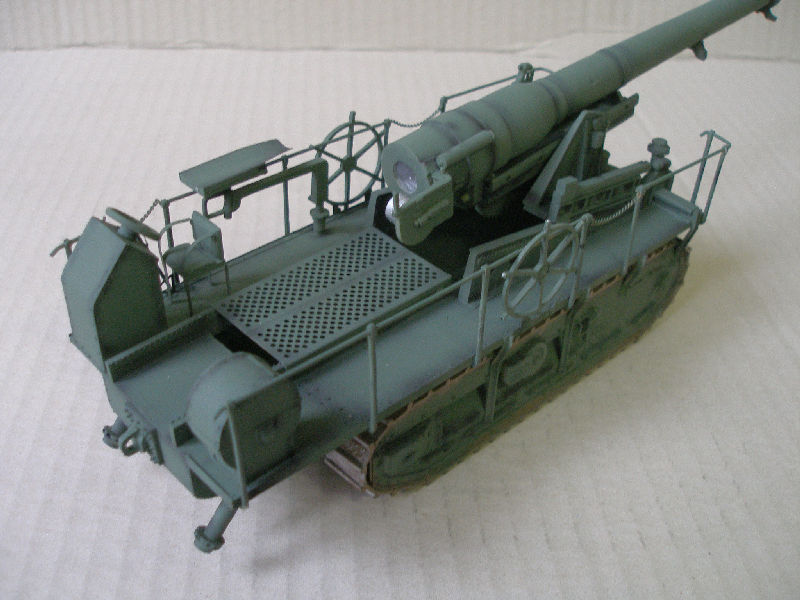 |
Vestiges découverts
.jpg) |
.jpg) |
.jpg) |
St Chamond GPF 194 mm
.jpg) |
Self-propelled Artillery born during WW1 because we found the need for a kind of artillery who can follow the attacking infantry for support then and also regroup the guns for a massive bombing of the battlegrounds
British tries with the Gun Carrier Mk. 1 a vehicle who has a little resemblance to the Mark I. The tracks weren't tall but low, almost flat. At the back a rectangular superstructure covered the engine together with the transmission of the Mark I, the latter now in a reversed position. Sharing it were the vehicle commander, a mechanic and two gearsmen. The original double tail wheel of the Mark I, intended to aid steering and attached to the rear of the vehicle .
For transporting the gun only the wheels had to be removed from the gun carriage - these were attached to the side of the carrier until needed again. In theory, the field gun could be fired from the vehicle; in reality only the howitzer could be so used. Alternatively the guns could be unloaded through a pivoting cradle assisted by two winding drums driven by the engine. Above the front of the track frame at each side was an armoured cab for the driver on the left and the brakes man on the right. 48 will be built
France built a true SPG and not a Gun Carrier as England
They designed and built two types of SP guns: the Schneider and the S:t Chamond. Both were designed to use their guns on-board, so to speak - as one would expect from a SP gun.
The Schneider SPG with a 220mm mle 1917 gun 12 were built before 1918 and they were employed, during the battles of the S:t Mihiel salient. T
The St Chamond design in two variants
.jpg) |
280mm Howitzer
194mm GPF Cannon.
ST Chamond had two electric motors, one for each track, but the electricity for the motors came from a tracked load carrier - carrying the ammo - that was linked up to the SP gun whenever it had to move. It as a weight of 32,6tons, and thus had a slow speed: 8km/h road speed max, 3km/h off-road speed.
During trips gun was retracted and pulled back, just to make it more easy to maneuver. In firing position a pair of doors in the middle of the vehicle was opened, allowing for the gun tubes recoil down.
.jpg) |
.jpg) |
.jpg) |
The Range of the gun was some 21kms . He had a muzzle velocity of some 725 m/sec
It could fire 2-4 shots/ 80kgs per minute, and up to 100 shots per hour.
Some 50 SPG were produced, but it is unsure how many of these that saw action during WW1.
They stayed in service during the 20s and 30s and were used again in WW2.
They saw action again in 1940.
After the fall of the France Wehrmacht use this Beuten panzer in the Eastern Front
Former French GPF were used in Sevastopol in 1942 within the battery 917 with 3 pieces.
and in Leningrad front with the 4th battery from the Abteilung II/84 with 3 guns It is a particular use make of this weapon by the Germans
They have not returned to service, but these materials were modificated with the use of the barrel to produce a hybrid material surprisingly, the 19.4 cm K485/585 (f):
.jpg) |
.jpg) |
Barrel were removed from their carriages and put on the circular frame carriages of French mortar coast Mle 1889.
They were used to arm coastal batteries in Denmark at Stauning ( HKB Stauning 17./180 )
It was also expected an HKB Bjerghuse18./180 with 4 pieces
On March 1st 1944, there were 15 19.4 cm K.485 (f) 6 tracks and 19.4 cm K.485/585 (f) of which 4 to Stauning.
The guns were mounted on a Ringstand, Bauform 271
The range of the K.485 (f) is 20,800 m and that of K.485/585 (f) is 22,000 m
Some were taken over by the Italians, and used by them.
: